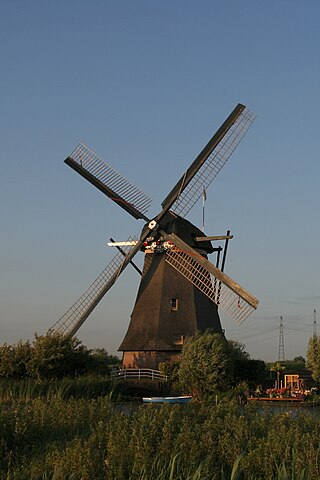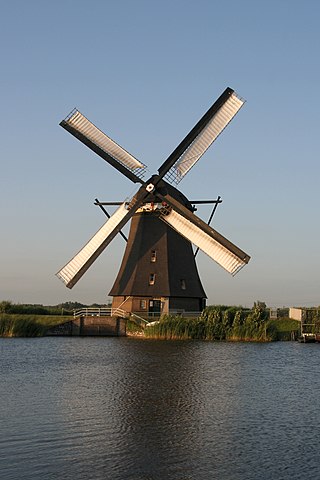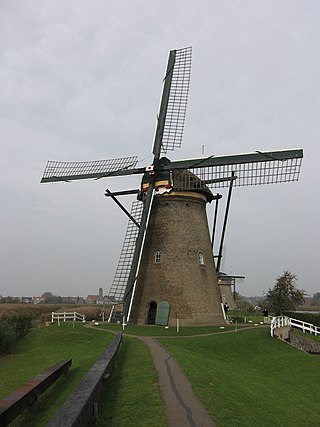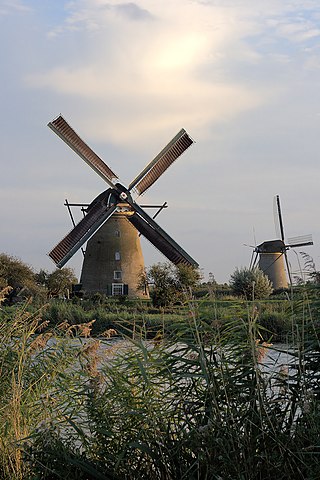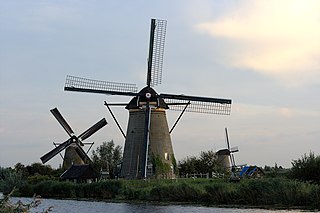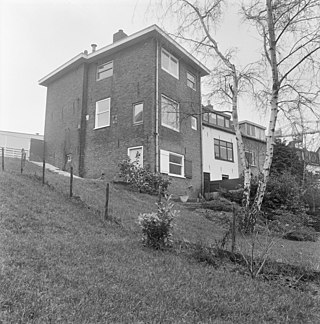8 Sights in Alblasserdam, Netherlands (with Map and Images)
Legend
Welcome to your journey through the most beautiful sights in Alblasserdam, Netherlands! Whether you want to discover the city's historical treasures or experience its modern highlights, you'll find everything your heart desires here. Be inspired by our selection and plan your unforgettable adventure in Alblasserdam. Dive into the diversity of this fascinating city and discover everything it has to offer.
Sightseeing Tours in Alblasserdam1. Overwaard Molen No.2
Overwaard Mill No.2 is a windmill in Kinderdijk, in the Dutch municipality of Molenlanden. The mill was built in 1740 by order of the Overwaard water board. After many years of grinding the bosom, fate struck. On April 12, 1981, a fire broke out due to a leaking gas cylinder. The mill was so badly damaged that the octagon had to be pulled down. The mill was only insured against fire for 75,000 guilders. On March 28, 1983, the foundation for the reconstruction of the windmill in Kinderdijk was founded. Two years later, reconstruction began. On 26 April 1985, Prince Claus put the rebuilt mill into operation. The flight of the mill is 29.56 m., which means that the mill Overwaard No.2 had the largest flight of all Dutch mills until the reconstruction of basin mill no. 6 in Haastrecht in 2011.
2. Overwaard Molen No.1
Overwaard Mill No.1 is one of the Kinderdijk windmills, in the Dutch municipality of Molenlanden. The mill, which dates from 1740, was the gauge mill of the eight mills that drained the Overwaard. It is owned by the Kinderdijk World Heritage Foundation. The mill has an iron paddle wheel with a diameter of 6.70 meters that is used to drain the low basin of the Overwaard. The mill is inhabited and cannot be visited.
3. Nederwaard Molen No.2
Nederwaard Mill 2 is one of the Kinderdijk mills, in the Dutch municipality of Molenlanden. The mill, which dates from 1738, serves as a visitor's mill. There is a museum house in the mill. The owner is the Kinderdijk World Heritage Foundation. The mill has an iron paddle wheel with a diameter of 6.30 meters with which the low basin of the Nederwaard is drained.
4. Nederwaard Molen No.4
Nederwaard Molen 4 is one of the Kinderdijk mills, in the Dutch municipality of Molenlanden. The mill, which dates from 1738, is inhabited and cannot be visited. The owner is the Kinderdijk World Heritage Foundation. The mill has an iron paddle wheel with a diameter of 6.30 meters with which the low basin of the Nederwaard is drained. The hull of this mill was built 48 cm higher in September 1871.
5. Nederwaard Molen No.3
Nederwaard Molen 3 is one of the Kinderdijk windmills, in the Dutch municipality of Molenlanden. The mill, which dates back to 1738, is inhabited and cannot be visited. It is owned by the Kinderdijk World Heritage Foundation. The mill has an iron paddle wheel with a diameter of 6.50 meters that is used to drain the low basin of the Nederwaard.
6. Huis van Zessen
The Huis van Zessen is located on the West-Kinderdijk in Alblasserdam and was built in 1923. The house was designed by Cornelis van Eesteren for the widow A. van Zessen. It is the only house designed by Van Eesteren that was built and still exists today.
7. Kortlandse Molen
The Kortlandse Molen in Alblasserdam is a polder mill built in 1890, to replace an earlier seesaw mill. It is a round stone mill, the lower part of which is cylindrical with a conical masonry part on top. This special form is rare elsewhere. The Kortlandse Molen has a paddle wheel outside the mill, which was used to drain the polder on wind power until 1953. It was then sold to the municipality of Alblasserdam, which maintained it. The mill now drains the Kortland polder on a voluntary basis.
8. Souburghse Molen
The Souburgse Molen is a round stone mill in the Dutch municipality of Alblasserdam. The mill was built in 1860 and was used as a polder mill until 1945. The mill drained the Souburg polder with a paddle wheel until this function was taken over by an electric pumping station. In 1997 he was dismantled. Since 2014, the Souburg Mill has been owned by the SIMAV, which will restore the mill in working order. The restoration started in May 2019.
Share
How likely are you to recommend us?
Disclaimer Please be aware of your surroundings and do not enter private property. We are not liable for any damages that occur during the tours.
